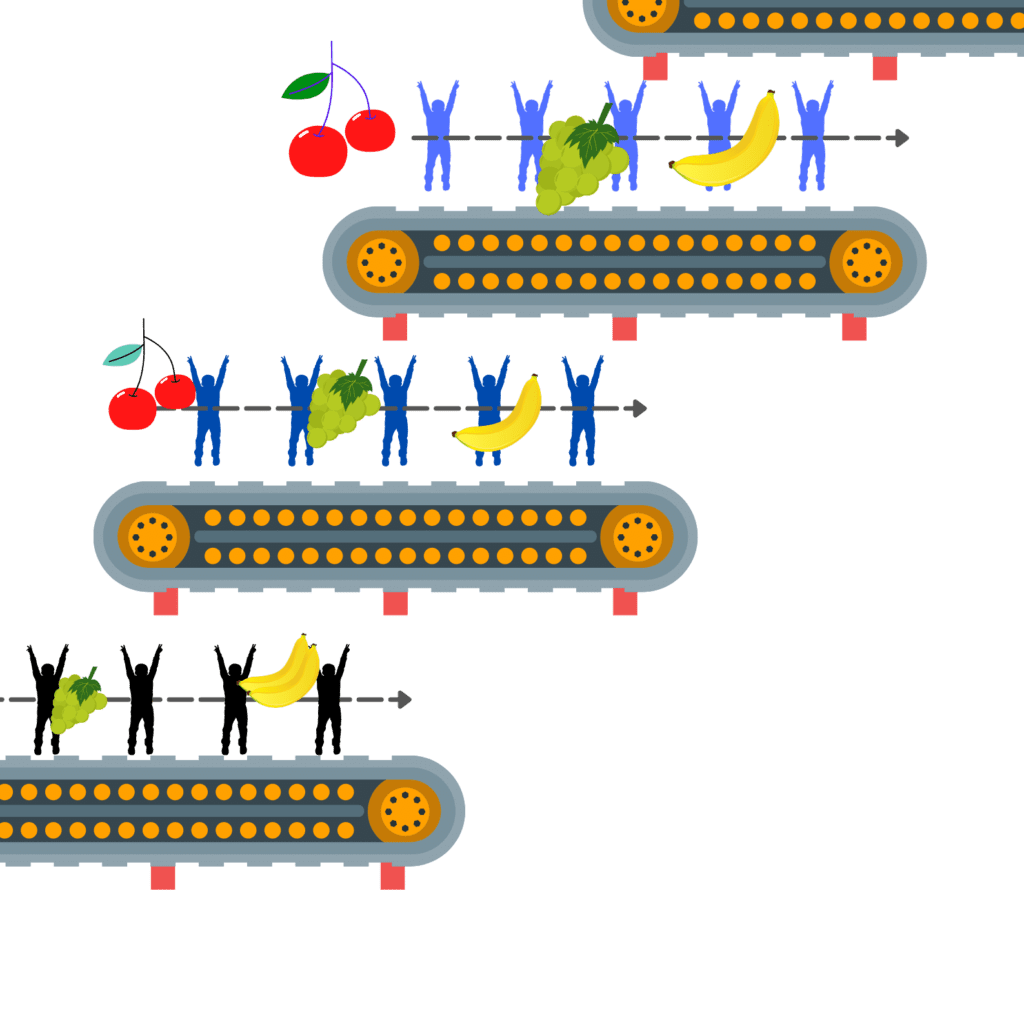Continuous career development plans are crucial for the success of an organization. Despite having robust recruitment and onboarding processes, many organizations overlook talent management or limit it to one-time training during induction. This approach leaves individuals to handle skill management within their teams, which can be challenging.
In recent years, the way people work has undergone a significant transformation. The employee lifecycle has shortened, leading to frequent changes in skillsets and skill levels within teams.
While organizations do implement employee training and development plans, these efforts often involve self-learning, sporadic classroom training, or sending employees to external programs. While these initiatives may provide some value, they fail to address the underlying issue, especially when organizations has to regularly hire new employees. As per Gartner Just 25% of Employees Are Confident About Their Career at Their Current Organization
Importance of continuous career development
In today’s fast-paced and ever-changing workplace, it is more important than ever for employees to be able to continuously develop their skills and knowledge. This is true for both new employees and those who have been with an organization for many years.
When a new employee joins an organization, they are unlikely to have all of the skills and knowledge necessary to be successful in their role. They will need hands-on experience to fully understand the work and the skills required.
Providing all necessary skills upfront is not the best approach, as it would take a lot of time and the retention rate would be low. Employees need to put the concepts into practice to truly learn. Additionally, as the complexity of skills increases, initial training will not be enough to develop the skills required at that level.
This is why it is important for organizations to have a continuous career development strategy in place. This strategy should help employees identify their skills gaps and develop the skills they need to succeed in their current role and beyond.
Benefits to continuous career development
There are many benefits to implementing continuous career development plans. These benefits include:
- Increased employee engagement and satisfaction: Employees who feel like they are constantly learning and growing are more likely to be engaged and satisfied with their work.
- Improved employee performance: Employees with the right skills and knowledge are more likely to perform at their best.
- Reduced employee turnover: Employees who are happy with their career development opportunities are less likely to leave their jobs.
- Increased organizational agility: Organizations with a culture of continuous learning are better able to adapt to change.
- Enhanced competitive advantage: Organizations that invest in their employees’ career development have a competitive advantage over those that don’t.
If you are looking for ways to improve your organization’s performance, then you should consider implementing continuous career development plans. These plans can help you attract and retain top talent, improve employee performance, and boost the bottom line. Lets take a look at key aspects for implementing continuous career development / career progression plans in an organization

Competency Matrix
The best strategy is to divide the entire competency matrix in shorter skills and skill levels and map them with the experience employee has in the organization, and then have a learning calendar for the employees on weekly monthly and quarterly basis, with its direct linkage to appraisals
This process can be further made effective if the work assigned during this time to the employees maps directly to the skills acquired so far
External Mentoring
In the fast-paced landscape of new organizations and ventures, the competition for top talent is intense. As the demand for perfectly aligned resources exceeds the supply, relying solely on such talent is not feasible for sustained organizational growth. Continuous Career Development plans can mitigate these challenges, but needs trainers and mentors, involving only key resources within the organization can consume a lot of their valuable time. External mentors, individuals who have hands-on experience in building teams and possess deep insights into training, skill development, and people management, bring valuable expertise and can help accelerates the process, expediting the organization’s overall growth.
Our Experience
In my last organization, we started a similar career progression plan, once we realized the cycle of new resources is going to stay, and we need a way to structurally bring the people to expected levels of performance. We did face several challenges, most importantly that time required for continuous trainings and its impact on both trainers and trainees, grabbing the mind share and making people believe in the approach, monitoring and reviews to have a smooth process, but finally we were able to put in place the process which was then considered a norm.
Implementing Continuous Career Development Plan
Pre-requisites
For any organization planning on implementing such programs, following have to be in place to make the program successful
- Skill Management Body / Committee to oversee the entire implementation and execution of the program, It should include
- A sponsor from senior management accountable for the program.
- A senior HR personnel handhold the entire administration, calendar, scheduling, and assessments.
- Include the key team members as a part of this body/committee.
- We can use an LMS for the automation of a considerable number of activities, but not having an LMS should not be a blocker to start.
- Prepare a bench of trainers, within the teams, so there is no dependency on one person.
- Have a train-the-trainer program so all the trainers deliver the training as per norms and expected standards.
- Integrate training assessment scores and training coverage with quarterly performance discussions
- Line managers should be accountable for the participation of team members.
- There should be a feedback system for all trainers, content, and trainees and the feedback loop should be closed by incorporating the feedback on a continuous basis.
- Set benchmarks for individual trainers, candidates, administrators, line managers, and so on.
Add ons
- Systems should be designed so the work done on the job can be associated with the training covered to assess the effectiveness of training.
- Positive reinforcements if possible should be introduced for all the parties to achieve better success.
Skill Progression Matrix
- Decide the duration the program would be run for any individual for a given role
- Break the duration in to, Quarter –> Month –> Week
- Decides the Topics / Subjects, these should include any soft skills and functionals skill other than the core job skills.
- Distribute the overall skillset into skill levels.
- Map Skill Levels to be covered each week to come up with skill progression matrix
Training Content Preparation
- Prepare training content, and material even if it is outsourced or from existing materials.
- Roll out the training calendar
- Ask line managers to nominate candidates as per the training calendar
- Conduct the trainings/assessments and publish scores on intranets or LMS
- Training can be delivered manually or through recorded videos, but assessments have to be practical.
- Review the progress weekly and discuss the feedbacks received.
- Share the feedback with resources not achieving the benchmarks
For employee development to be effective, the work environment must prioritize continuous learning. Organizations should establish a culture of constant development and create programs that offer relevant training throughout an employee’s journey. This helps overcome current challenges and ensures a skilled talent pool to support organizational growth. These programs have a positive ripple effect, boosting confidence among senior team members and managers, increasing job satisfaction, addressing personal aspirations, improving engagement and retention, and ultimately driving better business results. The benefits of training and development cascade, leading to competent leaders, motivated employees, and increased profitability for the organization.
..
..
Author
Nikhil Kumar Ahluwalia
Founder Upspir
Nikhil has over 16years of experience in the industry, before starting UPSPIR he was heading the support, services, and delivery function at Ameyo/Exotel as vice-president, and he has vast experience in managing and leading technical support and delivery teams, With Upspir he aims to take his passion of developing and mentoring people to next level by sharing his experiences and learning with those who want to build their career in the tech support domain


